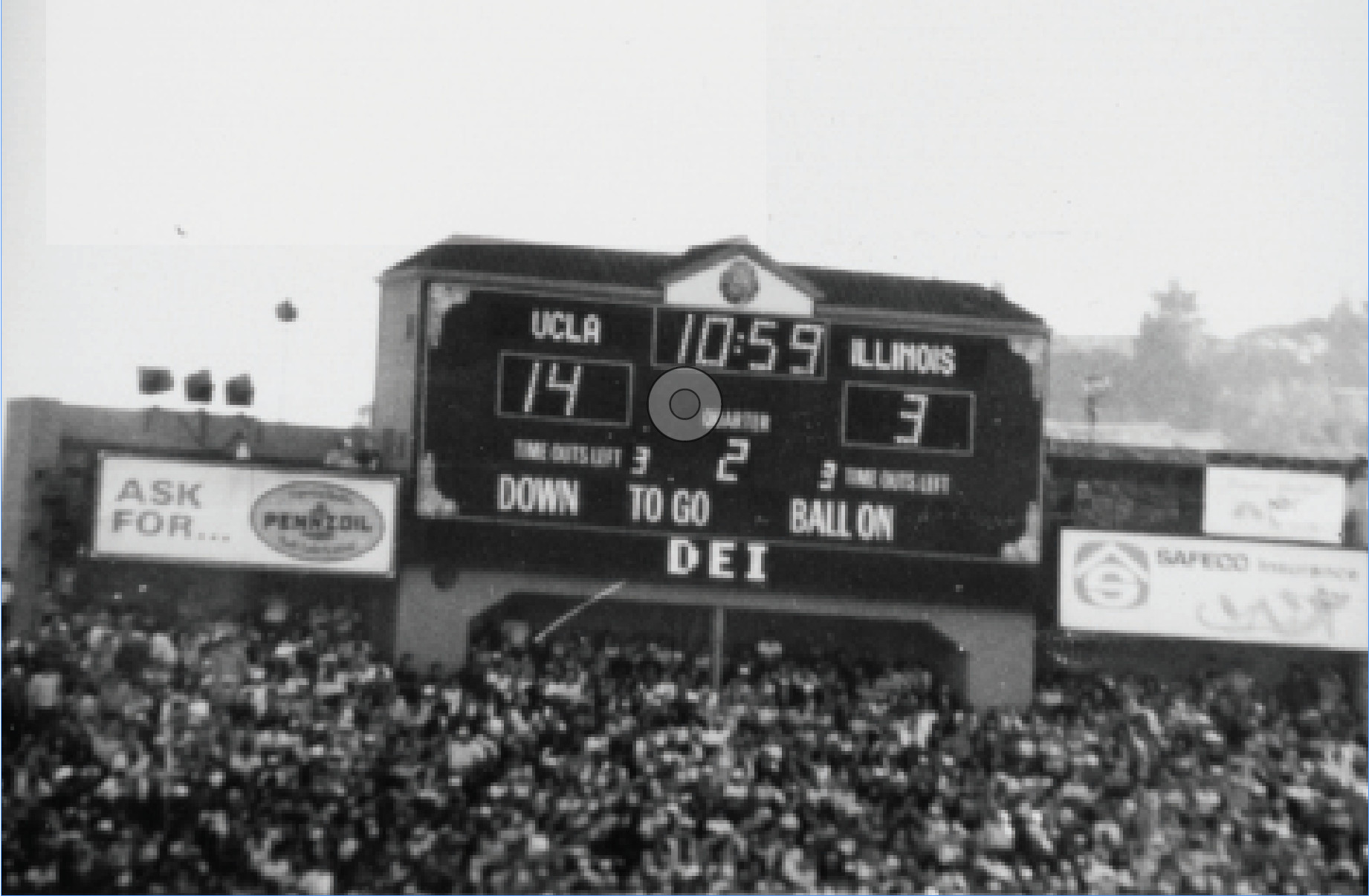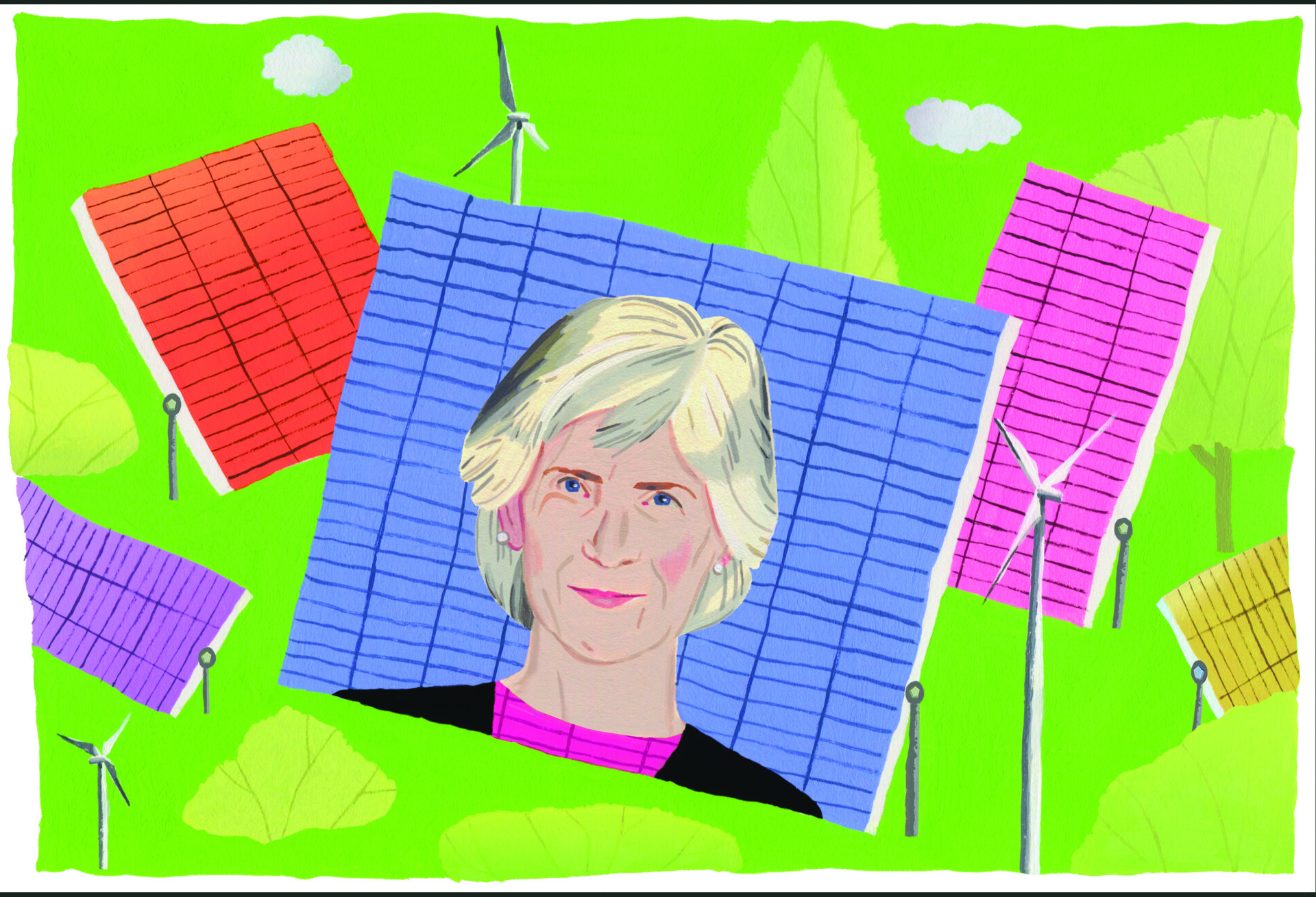Ready to Rumble
How Andrea Donnellan brings fault lines into sharper focus
by Alexander Gelfand

When the first of two powerful earthquakes struck near the town of Ridgecrest, some 160 miles northeast of Los Angeles, this past July, geophysicist Andrea Donnellan (PhD ’91) was scuba diving in Hawaii. As a principal research scientist at the Jet Propulsion Laboratory who studies the underlying dynamics of earthquake faults, Donnellan receives automated quake alerts and knows a lot of earthquake experts. So news of that first Ridgecrest quake reached her fast. “I surfaced, and I had 85 text messages,” she says.
Donnellan was soon back in California and out in the field, using a drone to take aerial photographs of a section of the fault system that generated the Ridgecrest quakes, which caused billions of dollars in damage. By periodically taking additional photographs of the system’s surface and manipulating the images with software, she plans to create three-dimensional topographic maps of the area as it changes over time.
This type of information, along with measurements from GPS stations and orbital imaging satellites, helps Donnellan understand how the earth’s crust deforms through the movement of the vast tectonic plates deep below its surface. Other scientists use her findings to generate earthquake forecasts that help shape disaster plans and focus seismic retrofitting efforts to make buildings earthquake-resistant, saving both lives and money.
Shaky Ground
Earthquakes in California are caused by the motion of the Pacific and North American plates—the world’s two largest plates, covering nearly 70 million square miles—as they grind past each other and fracture the earth’s crust to form faults. When opposite sides of a fault slip violently against one another, the earth literally moves beneath our feet.
Measuring how many millimeters a fault slips or how many centimeters a mountain grows in the wake of an earthquake helps Donnellan develop computer models of fault behavior: how faults rupture, accumulate strain, and even heal over time. “I look at the surface motion,” she says. “From that, I model what’s going on at depth.”
Those models allow Donnellan to suss out the mechanics of what’s happening miles underground. They also improve our ability to gauge the risk of future earthquakes, such as the catastrophic Big One that experts believe will inevitably strike the San Andreas Fault, so that we can better prepare for them.
With enough high-quality data, Donnellan can determine whether a fault system is likely to produce earthquakes at all and, if so, how big they might be.
Digging Deep
Donnellan wasn’t always interested in earthquakes. She started off studying the motion of ice sheets in Antarctica, and her work in glaciology proved so significant that a glacier now bears her name. But when the magnitude 5.9 Whittier Narrows earthquake struck Southern California during her first semester of PhD studies at Caltech, Donnellan switched her focus to faults.
For her doctoral thesis, Donnellan used GPS data to analyze a large fault system in California’s Ventura Basin. It was backbreaking work: At the time, researchers had to lug 90-pound GPS receivers powered by car batteries up mountaintops to gather just a few data points per year.
It was also prescient. Donnellan and several colleagues estimated that the Ventura Basin could generate a 6.4 magnitude temblor, and, within two months, the magnitude 6.7 Northridge earthquake struck the San Fernando Valley along one of the faults she had modeled.
Donnellan is quick to point out that she did not predict when and where the earthquake would occur. No one could have. Experts have gotten better at estimating whether a quake might occur within a fault system within the next 10 years, but predicting that a tremor will strike a specific location on a specific date remains impossible. And the higher the magnitude, the more difficult forecasting becomes. “The big ones are hard,” Donnellan says.
The Future of Forecasting
Improving forecast accuracy is possible, Donnellan says, but it requires better data and a deeper understanding of the physical processes associated with earthquakes. And Donnellan sees progress on both fronts.
Rather than relying on sparse GPS data alone, Donnellan now can feed her models continuous measurements gathered by a network of more than a thousand GPS stations, along with optical and radar imaging data from airplanes, satellites, and drones. Advances in computing power allow her to run many of her simulations on a laptop rather than a supercomputer, while machine learning and data mining reveal patterns in her data that weren’t visible before.
“I embrace new technologies and see them through—from difficult-to-use and error-prone to operational and scientifically mainstream,” she says.
All of this helps Donnellan see more clearly into the earth. Using radar images and computer modeling, for example, she and her colleagues showed the connection of a fault system that extends all the way from northern Mexico to Southern California. The researchers also gained new insight into how earthquakes transfer stress from one fault to another—findings that could improve estimates of whether a quake south of the border might trigger one in Los Angeles.
The planned launch in 2022 of a new radar satellite that will provide unprecedented global coverage of changes in the earth’s crust will only make things better. (The satellite is being developed through a partnership between NASA and the Indian Space Research Organization, with JPL managing and implementing NASA’s contributions.) “That will give us a fire hose of data,” Donnellan says. And it just might make the science of earthquake forecasting a little less shaky.

Alexander Gelfand is a writer and recovering ethnomusicologist based in New York City. His work has appeared in the Economist, the New York Times, Wired and many other print and online publications.
Related Articles
-

A Legendary Hack Turns 40
In this moment of Caltech mischief that required months of planning, students Ted Williams, PhD (BS ’84) and Dan Kegel (BS ’86) manipulated the sco...
-

The Pioneers
On the 50th anniversary of their graduation, the first four-year female graduates reflect on their time on campus—and where they went from here.
-

All In
The key to a more sustainable future? Make sure everyone can join the hunt for solutions, says National Energy Technology Laboratory director Maria...